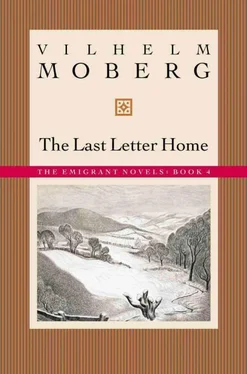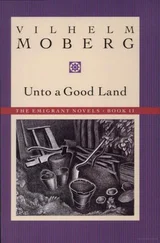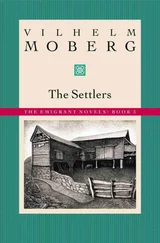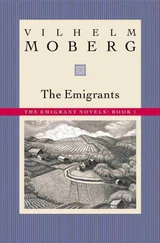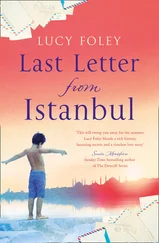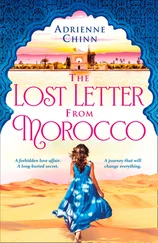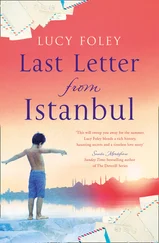Moberg strove to debunk the old heroic myths of Swedish history. But in his tales of the immigrants to Minnesota, he succeeded in his own right in creating a significant popular image. The figures of Karl Oskar and Kristina, the ultimate commonfolk, speak so powerfully to our imagination that they assume a dimension larger than life. Like many other contrasts in his life, this ironic twist would have hit home with Vilhelm Moberg and appealed to his literary sensibility.
Moberg’s writing style has been a subject of discussion since the 1960s when critic Gunnar Brandell denied him a place among the great creative artists of modern Swedish literature. According to Brandell, Moberg wrote a solid everyday prose that did not adequately express shades of difference or depict characters in sufficient depth. Moberg lacked “lyrical resources,” Brandell concluded. 19
Since that time several writers have defended Moberg’s writing style. Gunnar Heldén pointed out Moberg’s strengths in dealing with three central motifs in classic lyricism: nature, love, and death. 20Sven Delblanc described Moberg’s prose style as en poesi i sak, that is, a style that pays steady attention to small details, thus creating a harmony and poetry of everyday life without reliance on the neat turning of phrases or on striking images. 21Finally, Philip Holmes explained Moberg’s use of alliteration, phrase-pairs, and repetition in his prose. These devices allowed Moberg to slow his narrative tempo and to strive “for clarity and fullness of expression.” 22
Holmes described the Old Testament and the medieval Swedish laws as major influences on Moberg’s writing style. Moberg strove in his prose to produce the thought patterns of rural people from the nineteenth century. Although unlettered, these people were confronted with and forced to sort out a new world of impressions and complicated emotions. Mobergs task was to give a realistic voice to his characters. His success in finding this voice speaks for his creativity.
Roger McKnight
Gustavus Adolphus College
NOTES
1. Magnus von Platen, Den unge Vilhelm Moberg. En levnadsteckning (Stockholm: Bonniers, 1978), 310.
2. Vilhelm Moberg, “Där jag sprang barfota,” Berättelser ur min levnad (Stockholm: Bonniers, 1968), 29–46.
3. Von Platen, Den unge Vilhelm Moberg, 9.
4. Moberg, “Från kolbitar till skrivmaskin,” Berättelser ur min levnad, 119.
5. Moberg, “Romanen om utvandrarromanen,” Berättelser ur min levnad, 292.
6. Moberg, “Romanen om utvandrarromanen,” 293, 298.
7. Moberg, “Romanen om utvandrarromanen,” 294. For similar comments in English, see: Moberg, “Why I Wrote the Novel About Swedish Emigrants,” Swedish Pioneer Historical Quarterly 17 (Apr. 1966): 63.
8. Gunnar Eidevall, Vilhelm Mobergs emigrantepos (Stockholm: Norstedts, 1974), 19–20.
9. For discussions of Moberg’s research methods, see Philip Holmes, Vilhelm Moberg (Boston: Twayne, 1980), 110–32; Ingrid Johanson, “Vilhelm Moberg As We Knew Him,” Bulletin of the American Swedish Institute (Minneapolis), no. II (1956); Bertil Hulenvik, Utvandrarromanens källor: Förteckning över Vilhelm Mobergs samling av källmaterial, ed. Ulf Beijbom (Växjö: House of Emigrants, 1972).
10. Don Josè [pseud.], “Vilhelm Mobergs amerikabagage nära att gå till Europahjälpen,” Svenska Dagbladet, June 4, 1948, p. 11.
11. Sven Åhman, “Vilhelm Moberg ser på USA,” Nordstjernan, May 26, 1949.
12. Gustaf Lannestock, Vilhelm Moberg i Amerika (Stockholm: Zindermans, 1977), 36. Much of our knowledge of Moberg’s life in America is derived from the two men’s correspondence and from this volume.
13. For works in English detailing Moberg’s impressions of America, see Moberg, The Unknown Swedes: A Book About Sweden and America, Past and Present, ed. and trans. Roger McKnight (Carbondale: Southern Illinois University Press, 1988); McKnight, “The New Columbus: Vilhelm Moberg Confronts American Society,” Scandinavian Studies 64 (Summer 1992): 356–88. Moberg expressed many of his opinions in letters to Lannestock; these letters are now in the House of Emigrants in Växjö, Sweden, and are referred to in “The New Columbus.” See also Lannestock, Vilhelm Moberg i Amerika (in Swedish). My comments here and five paragraphs below are based on these works.
14. Moberg, Min svenska historia (Stockholm: Norstedts, 1971), 1:14.
15. Sigvard Mårtensson, Vilhelm Moberg (Stockholm: Bonniers, 1956), 202.
16. Sven Delblanc, “Den omöjliga flykten,” Bonniers litterära magasin 42, no. 6 (Dec. 1973), 267.
17. Rochelle Wright, “Vilhelm Moberg’s Image of America,” (Ph.D. diss., University of Washington, 1975), 34–40.
18. McKnight, “The New Columbus,” 384.
19. Gunnar Brandell, Svensk Litteratur 1900–1950: Realism och Symbolism (Stockholm: Förlaget Örnkrona, 1958), 261.
20. Gunnar Heldén, “Vilhelm Mobergs lyriska resurser,” Emigrationer: En bok till Vilhelm Moberg 20-8-1968 (Stockholm: Bonniers, 1968), 215–29.
21. Delblanc, “Den omöjliga flykten,” 266.
22. Holmes, Vilhelm Moberg, 126.
Introduction to The Last Letter Home
Moberg once estimated that he wrote three-quarters of the manuscript of the Emigrant Novels in California. 1He wrote all of Sista brevet till Sverige in Europe, finishing it in Locarno, Switzerland, in 1959. The Swedish title means “The Last Letter to Sweden.” In the 1961 American edition, the series was published as a trilogy, with The Settlers and The Last Letter Home presented as one volume. Lannestock explained: “Large parts of both books had been omitted; the publisher felt that they were of greater interest to European readers.” 2Later editions of the series presented the tetralogy as a whole, however, as does this Borealis Books edition.
Details of the difficulties between white settlers and the Ojibway and Dakota people (also known as the Chippewa and Sioux, respectively) form an important subplot in The Last Letter Home. Numerous first-person accounts by both white and Dakota people document the shock and cruelty of the Dakota War of 1862. Moberg had read sections of the journals of Swedish immigrant Andrew Peterson, which tell how Peterson and other Swedes fled with their families to an island in Lake Waconia during the war. 3Moberg also read historical texts to learn about events and other aspects of those troubled times (see his bibliography). Historians now argue about the validity of some of those texts, and readers should not accept Moberg’s use of historical sources uncritically.
Despite its relative briefness, the Dakota War of 1862 was a complicated series of events marked by acts of extreme brutality and exceptional humanity by different individuals on both sides of the conflict. 4This is information of which Moberg was well aware; therefore, in describing the Dakota War in The Last Letter Home, he was faced with the difficult task of joining his narrative of actual historical events to a description of his fictional immigrants’ immediate experiences and emotions. For example, he incorporated into his novel the grisly accounts of mutilation of the bodies of whites by Dakota people. While some stories of this type may have a basis in fact, many others of questionable reliability were told by members of the military burial parties that reached the dead after several days. Exposure of the bodies to animals and August heat may have produced gruesome results that the whites were all too ready to blame on the Dakota.
Читать дальше
